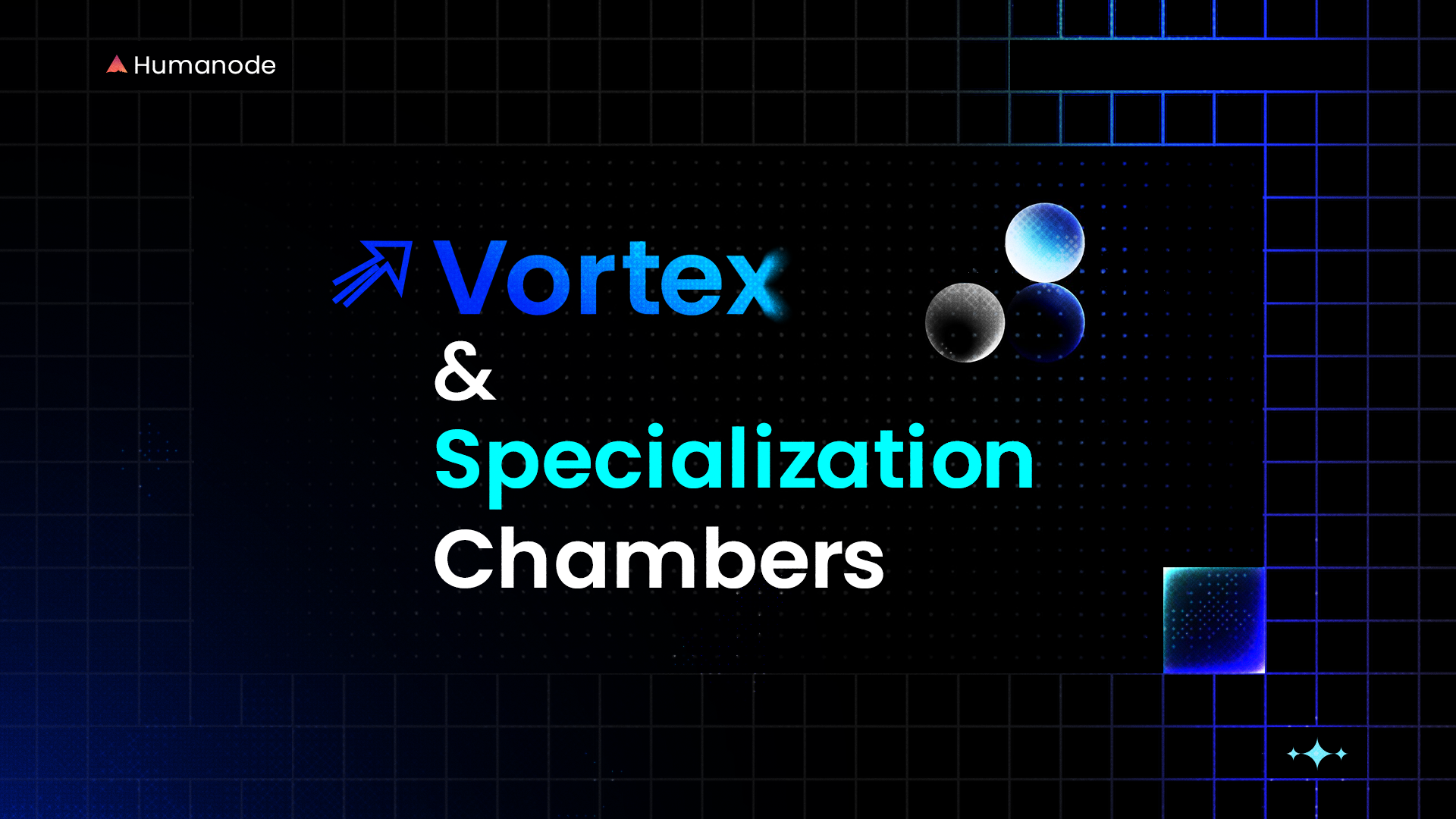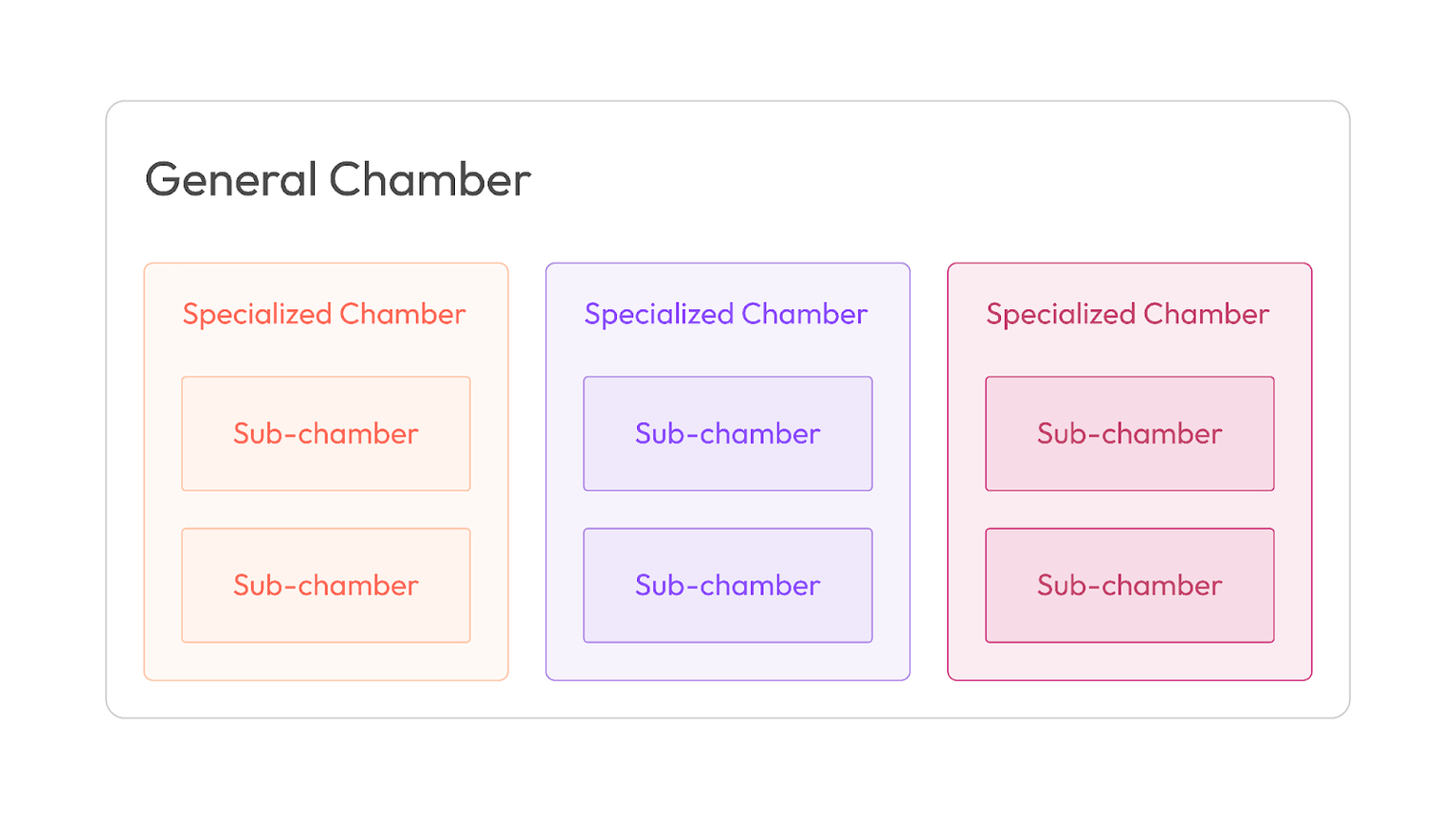Vortex and Specialization Chambers

When discussing governance in Vortex, there is a core principle that we must remember, aside from the principle that one person equals one node equals one vote, that is. It is the fundamental principle of Cognitocracy, and the fact that good governance comes from people who actually know what they are talking about.
Two politicians, or political parties, engaging in a dispute over a topic solely for temporary political gain, rather than for the community's benefit or the long-term impact on the community, is not a foundation for effective and beneficial governance.
Just because someone has power or money and has great influence because of how good they look online, or how smooth they talk, or how well they utilize character assassination, are also not what we are looking for, no matter how common those methods are.
As mentioned before, Cognitocracy is a Meritocracy that puts the prevalence of an inventive, decisive, rational, and intelligent mind above all else.
In simple terms, it aims to make sure that we put people who actually know what they are doing in a specific field, in a position to make decisions and proposals concerning that field.
Let’s say you want to have a chocolate cake. Would you rather have someone known to bake great chocolate cake in charge? Or would you like to have a car mechanic who knows how to make the fastest racing cars in the world, but doesn’t know the first thing about using a kitchen or cracking an egg to do the job because he did such a great job on your car? Or do you want a smooth-talking politician who proclaims that he “knows chocolate cake better than anyone else in the world”, but has never proven it, to do the baking?
Most would agree that, other than as a prank, you would have the chef known for baking good chocolate cake do the job. It would be even better if there were a number of chefs who are known for doing great chocolate cakes, cooperate in co-creating an even better chocolate cake, or even compete for the position by presenting the community with their recipes that they worked on just for this occasion.
In a DAO for a blockchain project, although feedback would most likely be needed, the dev team probably wouldn’t need or want the media team or the community managers to dictate what language they should be coding in or how to build a specific dApp. Nor would the Finance team want the Dev team to dictate how they format their invoices or how to best balance the books.
Specialization Chambers
Cognitocracy functions through Specialization Chambers (SC), each representing a distinct field of expertise. And these Chambers are governed by specialists - human nodes who had their innovative proposal accepted by a qualified majority of voters within a specific chamber.
The fundamental principle of the Chambers is that only those who have convincingly demonstrated their creative merit to the majority of specialists in their respective field are granted the right to vote on matters related to that field. As mentioned above, only those who are qualified to bake chocolate cakes should be in charge of baking the chocolate cake for the community.
There could be the Chamber of Engineering, the Chamber of Finance, the Chamber of Media, the Chamber of Business Development, the Chamber of Law, the Chamber of Security and Privacy, or any “Chamber” that a project feels it needs to cover specific specialities to move the project forward.
New chambers could be built in order to satisfy specific needs of the community or project, or could even be dissolved if the consensus is that they have outlived their usefulness, are not fulfilling their role, or are corrupt or have malicious intent.
Sub-Chambers
At times, the Chambers can be broken down into smaller Sub-Chambers to make sure the system is efficient and that the right talent is allocated to the right topic.
Let’s say there is a “Chamber of Media”. Although the general policy towards the messaging, the policies concerning the use of the media kit, or what media venue should be used by the project would be something that the main Chamber would decide, the role of content creators, such as animators, designers, article writers, illustrators, social media directors, writers of technical guides, short content creators, and streaming content creators would probably be better divided into smaller working groups.
After all, there is nothing more frustrating than a short reel creator ordering a technical writer to slash a full technical guide into visual content that is no longer than 15 seconds.
In short, if there is a need to constantly make decisions precisely connected with the respective subfield, the creation of a sub-chamber is the way to go.
Thus, under the Chamber of Media, for example, you could perhaps have the Sub-chamber of Graphic Designs, the Sub-chamber of Technical Guides and Manuals, the Sub-chamber of Social Media, the Sub-chamber of Audio-content, the Sub-chamber of Interactive Content and Contests, the Sub-chamber of Video-content, the Sub-chamber of publication, and so on.
General Chamber
Naturally, there are some topics that need to be discussed by everyone. Especially if the topic affects everyone in the system.
These topics are discussed in the General Chamber, which is the venue for proposal submissions that affect the system as a whole. It is important to remember that the General Chamber incorporates all cognitocrat-governors that reside in the system, regardless of their field of expertise.
Any ruling of a GC is absolute and must surpass SCs in its legislative power, as it would represent a democratic consensus of the whole system.
The General Chamber can also be used as a method for forced admittance of a proposal to an SC.
For example, if an SC proposal was locally declined several times, then a proposer could submit it to the GC. If the cognitocrats vote to accept it, at the General Chamber, then it will be enforced upon the SC, and this proposer would still become a cognitocrat.
This is effective if there happens to be a “voting block” of people who are “set in their ways”, or perhaps there is a “conflict” between two or three “schools of thought”.
The thing to remember, though, is that the difficulty in proposing something that should be dealt with in a Chamber, or Sub-Chamber, is that getting the quorum in a GC is much harder than in an SC, and cognitocrats will be reluctant to contradict the opinion of experts in the respective SCs to enforce a proposal that was declined by the experts locally.

Proposal Pools
Proposal pools act as a means to filter out crucial proposals and implement the quorum of attention. It is good to remember that every chamber has a proposal pool attached to it. Even the General Chamber and the sub-chambers have their own proposal pools.
Proposals are submitted in a free form to the proposal pool of a respective SC. Active governors act as scouts that go through the submitted proposals and either upvote or downvote those proposals that they consider to be either useful or harmful.
As soon as a proposal receives attention from 22% of active governors in a chamber, but not less than 10% of upvotes from governors, the proposal gets propelled to a chamber where the voting procedure begins. If the proposal does not pass this necessary threshold, it will remain floating in the proposal pool.
Sure, the proposer can withdraw their proposal at any time, but they will receive a certain cooldown before being able to cast the same proposal once again. This cooldown may differ from Chamber to Chamber, or depending on the type of proposal.
The biggest distinction between the Voting Chambers and the proposal pool is the fact that delegated votes are not counted in the proposal pool. Thus 22% quorum of attention that has been cast would come from real human active governors only. This prevents governors with big followings from passing proposals by themselves.
In short, proposal pools act as drivers of the attention of the ecosystem participants. They allow the community of governors to decide which proposals must be voted upon urgently, which proposals should be revised, and which proposals they can simply ignore.
The Quorum for a Vote
Once a proposal leaves the proposal pool, a separate quorum is applied in the chambers. A quorum is reached if at least 33% of the Governors vote on a proposal. If 66% of the Governors, within the quorum, vote to approve a proposal, then Vortex will consider it approved.
Naturally, this means that 22% of the governors in the chamber will be the necessary minimum to approve a proposal. But remember, Human nodes that do not participate in governance are not counted in reaching a quorum, and the voting power of each governor is equal to 1 + the votes of his or her Delegators.
It is also important to note that, in general, any proposal that is pulled out of the proposal pool gets a week to be voted upon in the respective chamber.
—
In the next article concerning the Vortex, we will delve into Vote Delegation, Veto rights, and the actual Voting procedure.

